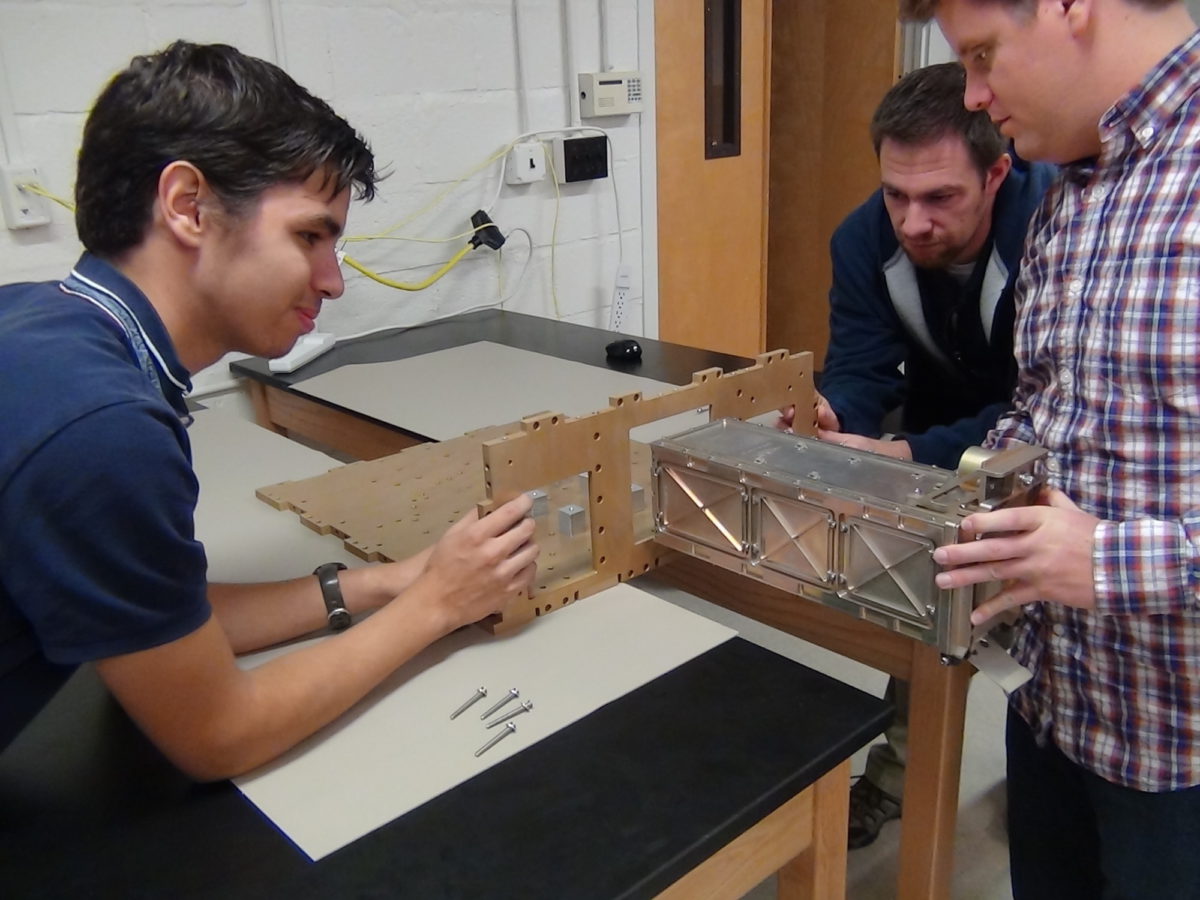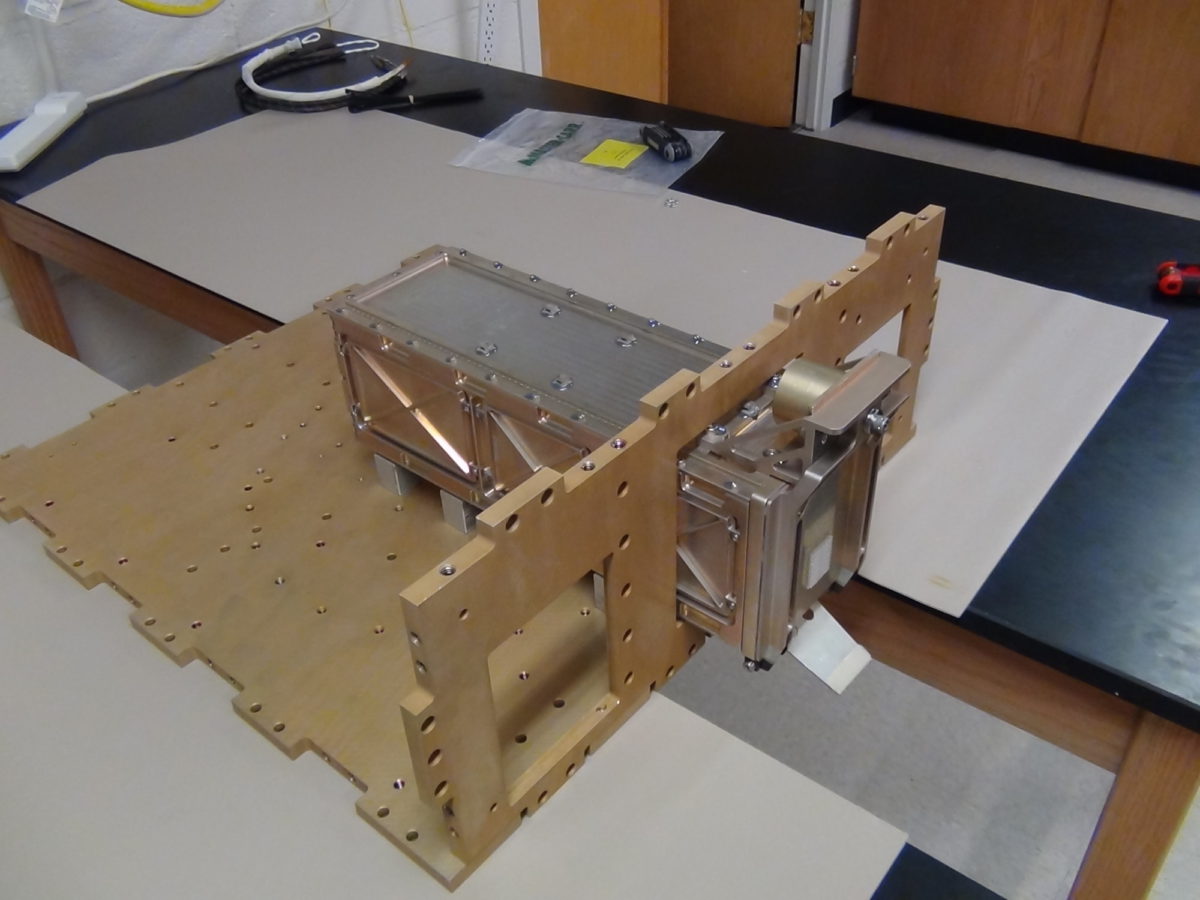Jason Davis • Oct 26, 2015
LightSail Deployer Passes Prox-1 Fit Check
Last week, hardware for the Prox-1 and LightSail programs came together for the very first time.
At Georgia Tech in Atlanta, Cal Poly San Luis Obispo engineers loaded a P-POD replica into the partially assembled frame of the Prox-1 spacecraft. The meetup was a fit check to make sure the two pieces of hardware fit together as designed.

A P-POD, or Poly Picosatellite Orbital Deployer, is a spring-loaded container slightly bigger than a three-unit CubeSat, which measures 10 by 10 by 30 centimeters. When LightSail is ready for flight, it will slide snugly into a P-POD, and the P-POD will be installed in Prox-1.
On Oct. 20, Cal Poly engineers and Georgia Tech students successfully installed a model P-POD into the Prox-1 chassis, which has been partially constructed. “It fit beautifully,” said Dave Spencer, Prox-1 principal investigator and mission manager for the LightSail-B mission.
LightSail and Prox-1 will launch to a circular, 720-kilometer orbit aboard a SpaceX Falcon Heavy. Liftoff is currently scheduled for Sept. 15, 2016. After completing an initial checkout, Prox-1 will release LightSail by opening the spacecraft's P-POD door. The pod’s coiled spring will push LightSail into open space. Later, Prox-1 will track LightSail and rendezvous with the CubeSat using visual and thermal imagery, ultimately watching as LightSail deploys its 32-square-meter solar sails.

Let’s Go Beyond The Horizon
Every success in space exploration is the result of the community of space enthusiasts, like you, who believe it is important. You can help usher in the next great era of space exploration with your gift today.
Donate Today

 Explore Worlds
Explore Worlds Find Life
Find Life Defend Earth
Defend Earth

